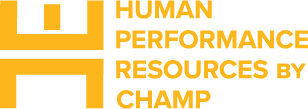Team composition, whether it’s a military unit, business team, or other type of group, is an important aspect of performance. Teams with a diverse composition tend to perform better over time. But what does “diversity” mean, and why is it so important?
What is diversity?
Diversity describes the degree to which there are differences among a group, unit, or team. Generally, there are two ways to think about diversity, and the Department of Defense considers both.
Demographic diversity includes age, gender, sexual orientation, education, income, marital status, religion, race, and ethnicity.
Cognitive diversity is about differences in personality, attitudes, values, knowledge, strengths, and skills. These might be qualities you were born with or you’ve developed through personal experience.
Diversity is sometimes referred to as a “double-edged sword” because it can bring challenges to team performance, yet it also can be an invaluable asset in the long run.
Why can it be difficult to achieve diversity?
Another way to think about diversity is to think about traits you can see, such as age or gender, and underlying traits, such as knowledge, perspective, or values. Your brain naturally tries to categorize people to help you make sense of your environment. Specifically, your mind tends to look at whether another individual is like you (“us”) or different from you (“them”).
People typically gravitate toward—and cooperate with—those they’re most similar to. Although it’s a natural process, this unconscious bias can get in the way of uncovering unseen diverse qualities, which can lead to more innovation and higher performance. It can also take time to reap the benefits of diversity among team members because of the time it takes to get to know people and how their differences can complement one another.
What makes it valuable?
Diversity boosts performance in multiple ways:
- Better problem-solving. Effective solutions and creative thinking happen when people with varied outlooks and experiences work together. Diverse teams excel when they consider all sides of an issue, focus on facts and evidence, and identify new solutions.
- More talent. Diversity initiatives help leaders recruit and retain talent from a broader pool. That means a more innovative and agile military with a broader scope of knowledge.
- Effective teamwork. Diverse teams tend to work better with other teams, which can result in more collaborations, and better cooperation and coordination across units.
- Improved satisfaction. Organizations that support inclusion and discourage discrimination enable their members and employees to be authentic in personality, spirit, and character, while bringing their strengths to their duties. This improves well-being and job satisfaction, and it decreases burnout and job-related stress.
- Broader reach. Service Members who spend time learning about other cultures can better navigate outside of their local communities. Cross-cultural competence is an important skill during global diplomatic or even combat missions.
The Department of Defense recognizes that a military made up of diverse individuals is important for overall readiness and mission success, and it continues to promote inclusivity and diversity. Differences might seem challenging sometimes, but diversity is essential for the military to represent and connect to those it serves. What might divide people also can be their greatest strength. Help your team optimize its performance by using interpersonal skills to recognize your biases, practice empathy, and see differences as an asset rather than an obstacle.




